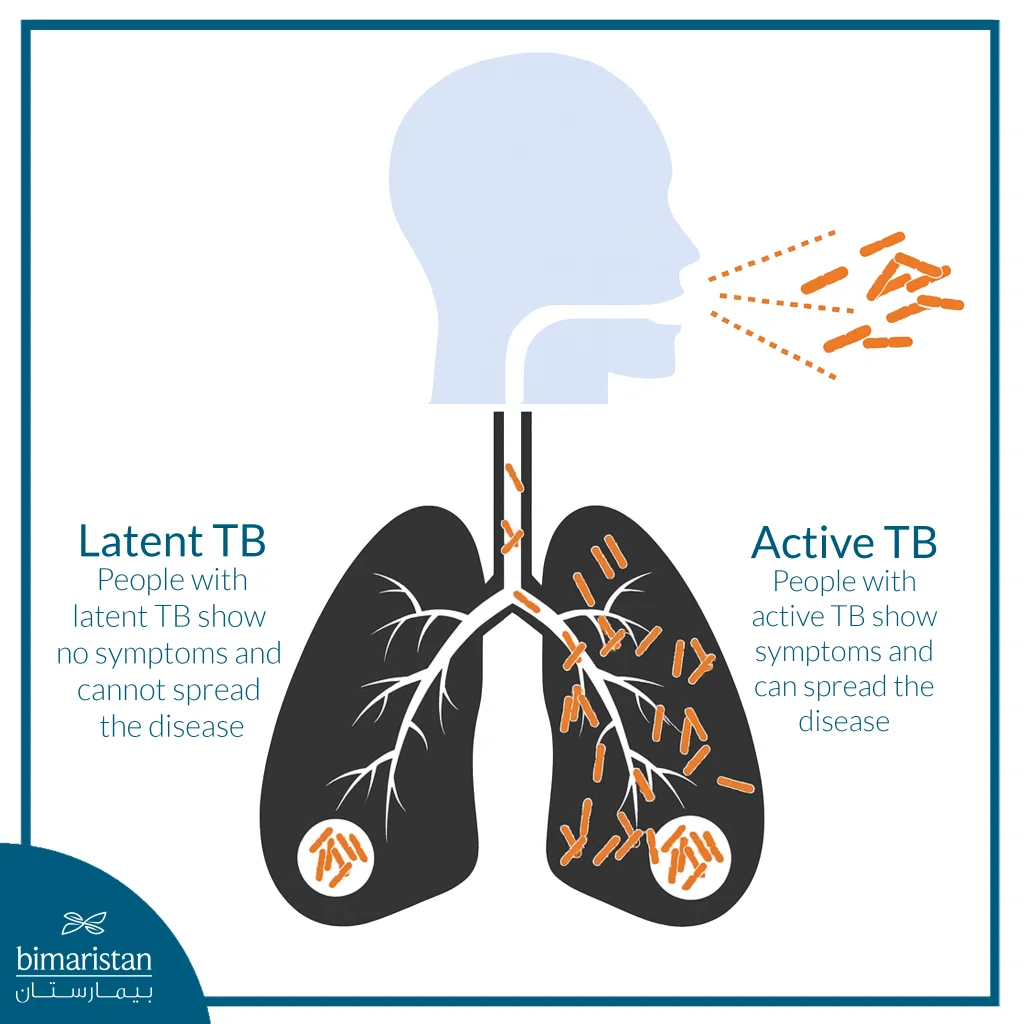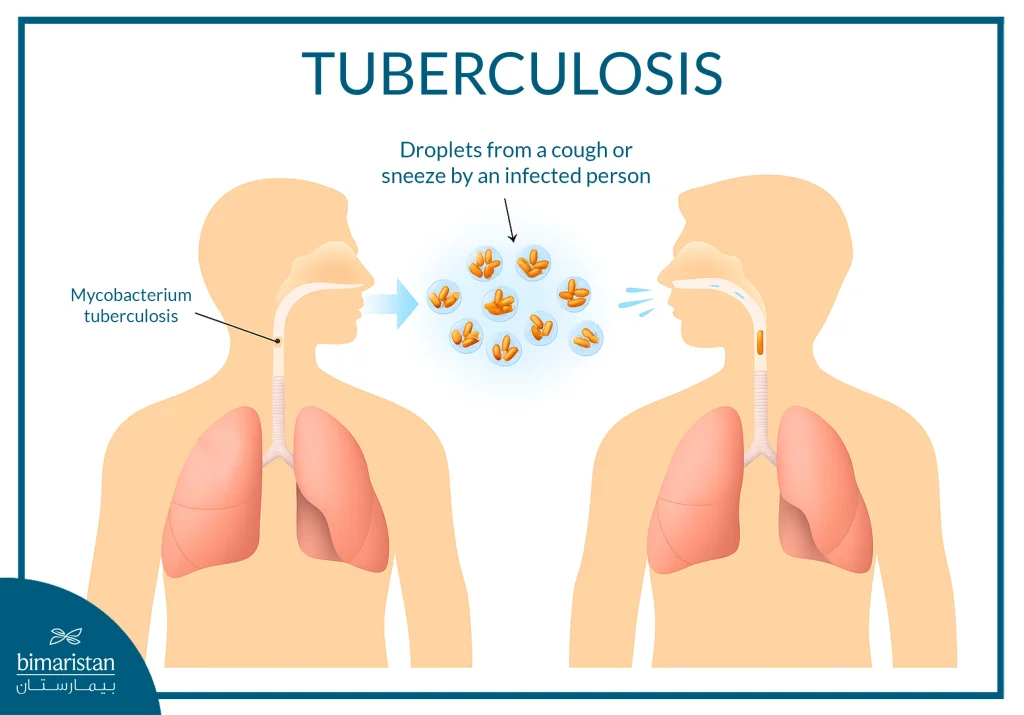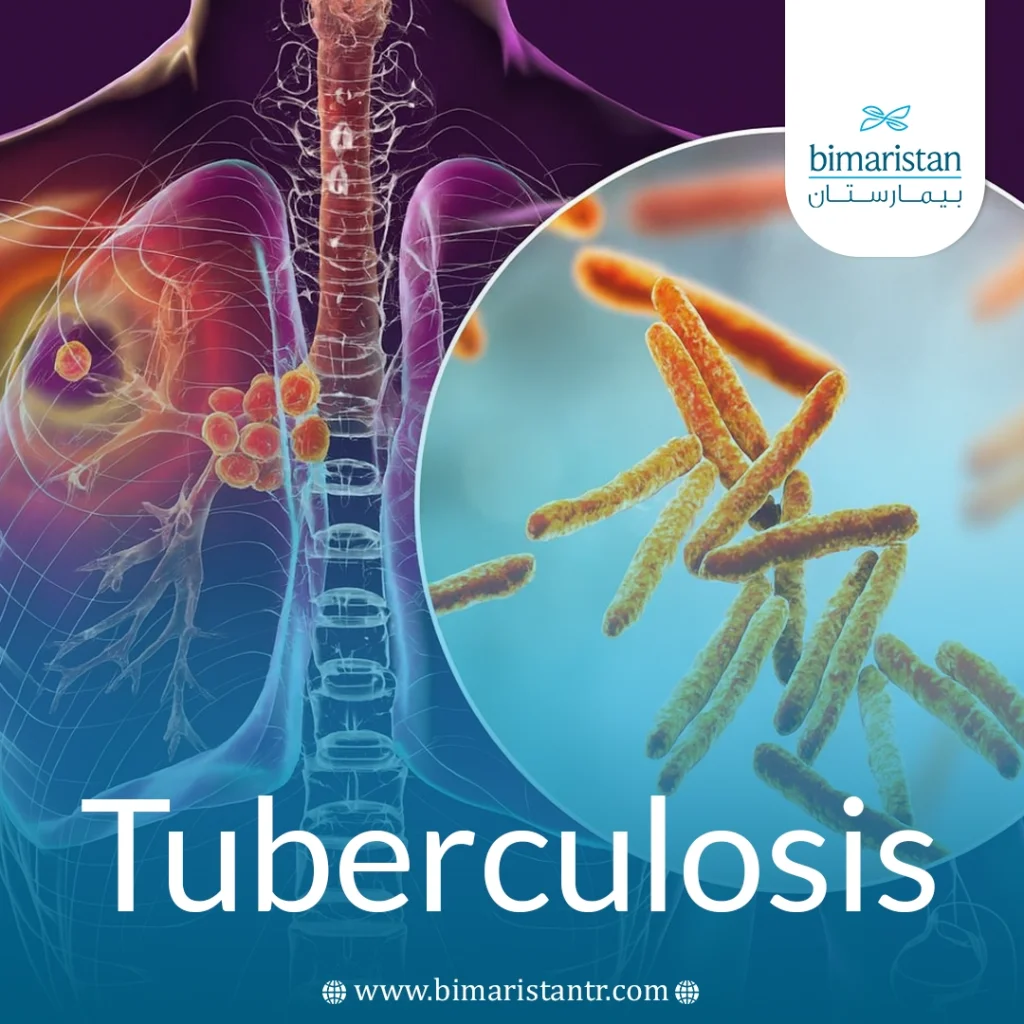Tuberculosis is one of the most common infectious diseases in the world and remains a health challenge despite significant advances in modern medicine. It is characterized by its ability to remain in the body for a long time without apparent symptoms, making early detection and effective treatment essential to minimize its spread and serious complications.
According to the World Health Organization (WHO) reports, about 10 million people are infected with tuberculosis worldwide every year, and it causes more than 1.5 million deaths every year, making it one of the most serious infectious diseases affecting public health. Countries such as Turkey have made significant progress in TB control programs by developing strategies for the detection and free treatment of infected people.
What is tuberculosis?
Tuberculosis is defined as a chronic bacterial infection caused by a germ called Mycobacterium tuberculosis. This bacterium is characterized by a thick cell wall that makes it resistant to many environmental and therapeutic factors, allowing it to remain inside the body for long periods without the immune system being able to eliminate it completely.
The disease usually settles in the lungs, where the bacteria begin to multiply slowly within its tissues, causing chronic infections that may gradually damage the pulmonary tissue, and in some cases the infection can be transmitted through the blood to infect other organs such as the kidneys, brain or bones, Tuberculosis is considered one of the diseases that can be prevented and treated when detected early, but the emergence of drug-resistant strains has made it more complicated to control in some regions of the world, and to understand the nature of this disease more clearly, it is necessary to recognize its different types and forms that determine the severity of symptoms and the extent of transmission.
Types of tuberculosis
Tuberculosis appears in different forms depending on the activity of the germ and the location of the infection in the body, and can be divided into three main types:
latent tuberculosis
In this form, the germ that causes tuberculosis inside the body remains dormant and inactive, causing no symptoms and not transmitted to others, and the immune system is able to contain it and prevent it from reproducing, but it is not completely eliminated. It is estimated that about a quarter of the world’s population carries this latent form of the infection, and most never get sick. However, the infection may turn into active TB later on when immunity is weakened by diseases such as diabetes, HIV or malnutrition.
Active tuberculosis
This type occurs when the immune system is unable to control the bacteria, and they become active and multiply inside the body. The disease manifests itself with obvious symptoms such as chronic coughing, fever, night sweats, and weight loss, and the infected person is able to infect others through the air. Without proper treatment, active TB can lead to serious damage to the lungs or even death.

Extrapulmonary tuberculosis
In some cases, the infection is not limited to the lungs but spreads to other organs such as bones, kidneys, meninges or lymph nodes. This form is known as extrapulmonary TB, which is less common than pulmonary TB but can be more serious, especially in immunocompromised people.
Symptoms of tuberculosis
Symptoms of tuberculosis vary depending on the stage of infection and where the body is infected, often starting gradually and increasing in severity over time. In some cases, the infection may go asymptomatic for several months, causing the patient to unknowingly pass it on.
Symptoms of pulmonary tuberculosis
Pulmonary tuberculosis is the most common form of the disease, with the following signs:
- Persistent cough for more than 3 weeks, sometimes with blood or sputum
- Frequent or low-grade fever with night sweats
- Extreme chills before the temperature rises
- Chest pain that increases with breathing or coughing
- Significant loss of appetite and weight
- General fatigue and weakness
Symptoms of extrapulmonary tuberculosis
When the infection spreads to other organs, the condition is known as extrapulmonary tuberculosis:
- Fever and persistent night sweats
- Weight loss and general fatigue
- Headaches and neurological disorders when the brain or meninges are affected
- Pain or swelling in the affected area such as lymph nodes, bones or joints
- Abdominal pain or urinary disorders if the kidneys or genitals are affected
Symptoms of tuberculosis in children
Symptoms in children may vary depending on age:
- Infants: Poor growth, loss of appetite, frequent vomiting, lethargy or constant crying, and sometimes a swollen fontanelle (the soft area of the head).
- Older children: Chronic fever that doesn’t go away with weight loss and a prolonged cough.
- Teenagers: Symptoms are similar to adult TB and include cough, fever, and general fatigue.
It is important to see a doctor if the cough lasts more than three weeks or if there is bloody sputum or direct exposure to a confirmed infected person, as early detection and prompt treatment can help prevent serious complications and transmission of the infection to others.
When should I see a doctor?
See your doctor if your cough lasts for more than three weeks or if you have bloody sputum, unexplained weight loss, or recurrent nighttime fever. It is also advisable to carry out preventive tests when in direct contact with a person with active TB, even in the absence of obvious symptoms, as early diagnosis of TB and effective treatment in its early stages helps prevent serious complications and helps stop the transmission of infection to others.
Causes of tuberculosis
There are many factors that lead to the development of tuberculosis, as the presence of the causative bacterium combines with conditions that favor its transmission and activity within the body. The following is an explanation of the main causes of the disease and the factors that increase the risk of contracting it:
First: The causative agent of tuberculosis
Tuberculosis is caused by a specific type of bacteria known as Mycobacterium tuberculosis. Classified as a slow-growing bacterium, Mycobacterium tuberculosis is highly adaptable and can remain in the body’s tissues for long periods of time without causing symptoms. The lungs are the most favorable environment for it to reproduce, but in some cases, it can travel through the blood and infect other organs.
Second: Modes of infection and transmission of tuberculosis
Tuberculosis is transmitted from one person to another through the air. When the lungs or throat are infected with active tuberculosis, the infected person, while coughing, sneezing, or talking, releases very fine droplets containing bacteria, and transmission occurs when these droplets are inhaled by another person, so that the germ enters the lungs and the infection begins.
People with latent tuberculosis do not transmit the disease to others, and people with active tuberculosis stop transmitting the disease about 2 to 3 weeks after starting effective antibiotic treatment.

Third: Factors contributing to the development of tuberculosis
Although bacteria can enter anyone’s body, certain groups are more likely to develop active TB due to weakened immunity or living conditions:
- A weakened immune system, such as in cases of HIV, cancer patients, or those undergoing chemotherapy or immunosuppression after an organ transplant
- Residing or traveling frequently to areas where TB is prevalent, such as Asia, Africa, and Latin America
- Living in crowded or poorly ventilated spaces such as prisons, shelters, and nursing homes
- Smoking and alcohol or drug use, as these habits weaken the body’s resistance
- Children under the age of five and the elderly, due to their weakened natural immunity
- Having chronic diseases such as diabetes, kidney failure, or malnutrition
Mechanism of infection in the body
Tuberculosis begins when Mycobacterium tuberculosis bacteria enter the body through inhaled air to reach the alveoli in the lungs, where immune cells called macrophages recognize them and swallow them in an attempt to destroy them. Still, these bacteria have a special ability to resist the defense enzymes inside the cells, so they settle inside them and survive.
The immune system triggers a larger defense response, and a number of immune cells gather around the bacteria, forming small clumps known as tubercles. These structures aim to isolate the germ and prevent it from spreading inside the lungs. At this stage, the infection remains dormant and the patient shows no symptoms, known as latent tuberculosis.
If the immune system is subsequently weakened, these tubercles lose their cohesion and the bacteria break free, and begin to multiply rapidly within the lung tissue, leading to chronic inflammation and progressive destruction of the alveoli, and the infection may spread through the blood to other organs in the body. At this point, known symptoms such as persistent coughing, fever, and weight loss appear, which is the stage of active tuberculosis that can infect others.
The spread of tuberculosis around the world
Despite significant advances in medicine and the effectiveness of prevention programs, TB remains one of the world’s most prevalent infectious diseases and a global health challenge. WHO data shows that most cases are concentrated in Asia and Africa, with 2023 data indicating that about 45% of new cases were documented in Southeast Asia, and 24% in Africa.
Low-income countries have the highest rates of infection due to poor health services and difficult access to treatment, while developed countries see a steady decline in infection rates thanks to early detection and treatment programs. Globally, the World Health Organization (WHO) and its partners are working to implement the End TB Strategy by supporting screening, treatment, and research programs, and Turkey is one of the countries that has made significant progress in the fight against the disease through national early detection programs and free treatment in collaboration with the WHO.
In conclusion, tuberculosis is one of the most important health challenges facing the world today, and despite its seriousness, early detection and treatment adherence ensure high chances of recovery and prevent transmission to others. International efforts have significantly reduced the incidence and mortality rates, especially in countries that implement effective screening and treatment programs, and with continued medical development and global cooperation, the world is gradually approaching the goal of eliminating TB and protecting future generations from one of the oldest infectious diseases in history.
Sources:
- World Health Organization. (2024, March 21). Tuberculosis (TB).
- StatPearls. (2025). Tuberculosis. In StatPearls . National Center for Biotechnology Information (NCBI).
- Centers for Disease Control and Prevention. (2025, February 28). Tuberculosis (TB): About TB.

